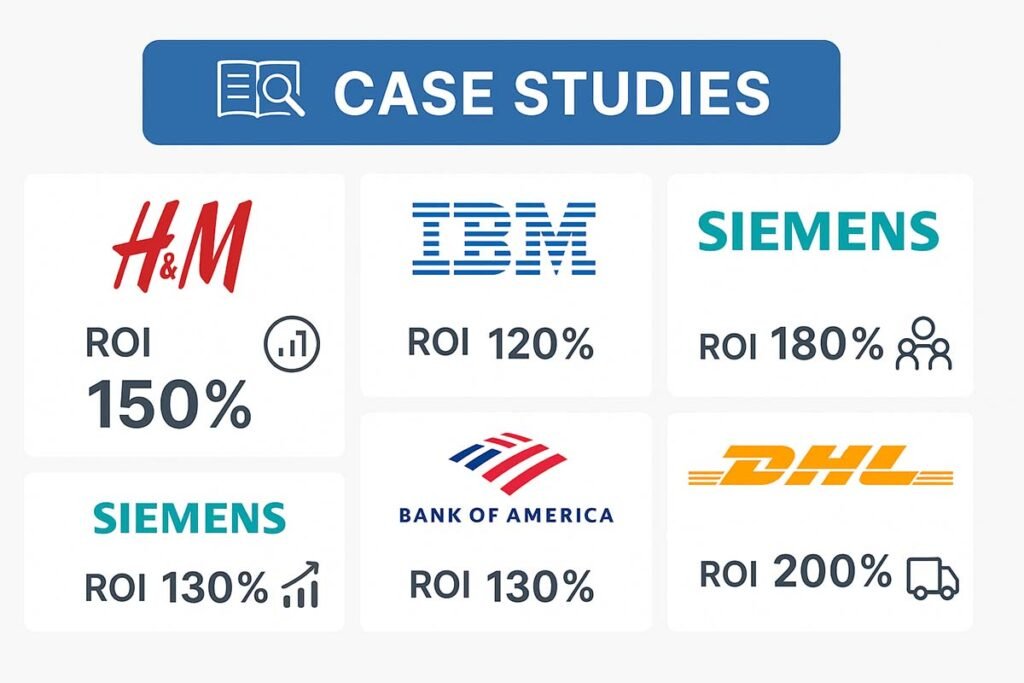Meet the Decision-Making Machines
Imagine a world where digital agents not only respond to your messages but strategize, act, and adapt on your behalf—completing tasks, learning from outcomes, and making decisions with little human guidance. That world is rapidly becoming reality thanks to agentic AI. Instead of automation tools stuck in rigid patterns or chatbots reading from scripts, agentic AI brings proactive, adaptive intelligence that actually works for you—and not just with you.
As businesses and individuals face mounting complexity, time pressure, and rising consumer expectations, these self-directed agents are transforming everything from customer service and product discovery to cybersecurity and healthcare. Let’s explore how agentic AI is shifting from buzzword to business backbone—and discover the innovators leading the charge.
What Is Agentic AI?
Agentic AI refers to artificial intelligence systems that possess autonomy, initiative, and contextual decision-making capacity—meaning they can plan, execute, and optimize multi-step workflows to achieve goals, often with minimal human input.
- HIGH-LEVEL PERFORMANCE – Unleash power with Windows 11 Home, an Intel Core i7 Processor 14650HX, and an NVIDIA GeForce R…
- FAST MEMORY AND STORAGE – Multitask seamlessly with 16GB of DDR5-5600MHz memory and store all your game library on 1TB o…
- DYNAMIC DISPLAY AND SMOOTH VISUALS – Immerse yourself in stunning visuals with the smooth 165Hz FHD+ display for gaming,…
Agentic AI vs. Traditional Automation
| Key Feature | Traditional Automation | Agentic AI |
|---|---|---|
| Approach | Rigid, rule-based scripts | Flexible, adaptive, goal-oriented |
| Decision-Making | Pre-programmed only | Context-aware, dynamic |
| Human Involvement | High (for errors, exceptions) | Low (autonomously adapts to change) |
| Learning/Improvement | Very limited | Ongoing, self-improving |
| Example | Macro-based Excel automation | Smart digital assistants, autonomous bots |
- Traditional bots: follow instructions; unable to adapt.
- Agentic AI agents: identify issues, solve novel problems, iterate, and self-direct actions in real-world contexts.
Core Characteristics
- Autonomous task execution
- Self-learning and adaptability
- Context- and goal-based planning
- Collaboration with humans and systems
Why Now? The Technological Leap Behind Agentic AI
Recent breakthroughs in large language models, contextual learning, reinforcement learning, and multi-step planning have made agentic AI practical in enterprise, healthcare, logistics, and consumer tech.
Major Enablers:
- Massive compute power (cloud & edge)
- Sophisticated algorithms (transformers, LLMs)
- Orchestration layers (combining agents, bots, and human-in-the-loop)
- Real-time learning from feedback and data
Real-World Use Cases: How Agentic AI Is Creating Value
Customer Service: Goodbye, Scripted Bots
Case: H&M’s Virtual Shopping Assistant
- Handled FAQs, product picks, and guided purchases with 70% of queries resolved autonomously
- Led to a 25% boost in conversion rates and 3× faster customer resolutions
DevOps & IT Operations: Smarter Systems, Less Stress
Case: IBM AIOps Deployment
- AI agent filtered alerts, identified root causes, recommended fixes
- 40% fewer false alarms, 30% faster incident response
Cybersecurity: Responding in Milliseconds
Case: Darktrace’s Antigena Agent
- Self-directed anomaly detection and cyber threat response
- Neutralized 92% of threats with near-instant response, slashing breach costs
Healthcare: More Time for Patients
Case: Mass General Brigham’s AI Documentation Agent
- Automated note-taking, EHR updates, freeing clinicians for care
- 60% less time spent on paperwork, better patient engagement

Drug Discovery: Accelerating Science
Case: BenevolentAI x AstraZeneca
Manufacturing & Predictive Maintenance
Case: Siemens’ Industrial Edge Agents
- AI agents prevented equipment failures with live sensor data analysis
- 30% reduction in downtime, 20% savings in maintenance
Retail & Merchandising: Dynamic Shopping Experiences
- Autonomous chatbots manage returns, refunds, suggest upsells
- Bots handle flash sales, curate themed collections, drive real-time recommendations
In-Depth: Agentic AI in eCommerce
1. Real-Time Personalization
AI agents analyze shopper intent, behaviors, and context (across web, mobile, email) to tailor the user experience for every session.
Example Features:
- Dynamic homepage layouts per shopper
- Personalized banners, pop-ups, and journeys
- Product bundles built in real time based on user segments
2. Autonomous Merchandising & Dynamic Pricing
- Bots optimize product placements, update prices based on market and inventory.
- Seasonal campaigns can be launched, managed, and iterated—with no manual intervention.
3. Search and Recommendations
- Natural language processing to make search context-aware
- Predictive analytics drive “customers also bought” suggestions
- Real-time upsell and cross-sell, catering to individual shopper profiles
4. Multi-Channel Consistency
- Ensures shoppers see consistent offers, pricing, and experience across channels
- 73% of US consumers now expect this—AI is how brands deliver.
ROI Snapshot Table (eCommerce/Enterprise):

How Does Agentic AI Actually Work?
The Agentic AI Process
- Goal Setting
- Tasks and outcomes are defined by the user or stakeholder.
- Perception & Context Gathering
- Agent collects real-world data (customer behavior, operational metrics).
- Planning & Reasoning
- Multi-step plan developed; agent selects tools/actions.
- Execution
- Agent acts, adapts plan as context shifts.
- Learning & Optimization
- Real-time feedback used to self-improve for next cycle.
Human-In-The-Loop Model:
Agentic AI augments people, not replaces them:
- Complex, ambiguous, or sensitive cases can be routed to humans.
- Oversight ensures quality, ethics, and compliance.
Challenges and Considerations
- Ethics & Bias: Agents must be monitored to avoid reinforcing social or business biases.
- Security: Autonomous agents must be safeguarded against misuse or hacking.
- Scalability: Efficient orchestration is needed for multi-agent systems.
- Transparency: Users and stakeholders should know how and why an agent makes decisions.
Expert Opinions & Predictions
Industry leaders agree: Agentic AI will become a foundation for smart enterprise and consumer tech by 2030.
- Gartner predicts 33% of enterprise applications will have intelligent autonomous agents embedded by 2028.
- Adoption will rapidly expand across verticals as more companies measure tangible ROI in cost savings, revenue, and customer happiness.
Don’t Just Automate—Agentic AI Actually Works for You!
Agentic AI marks a leap from static bots to systems that adapt, learn, and truly help—putting actionable intelligence right at your fingertips. From eCommerce to healthcare, logistics to customer support, these agents are boosting performance, cutting costs, and making user experiences more personalized than ever.
Ready for digital coworkers that learn, improve, and deliver results? The future is agentic—now’s the time to bring it into your organization or workflow.
FAQ: Agentic AI
Q1. What is agentic AI?
Agentic AI refers to intelligent digital systems capable of acting with autonomy—setting goals, making decisions, and adapting on their own, with minimal human input.
Q2. How is agentic AI different from traditional AI?
While traditional AI solves pre-defined tasks, agentic AI agents operate across workflows, learn continuously, and adapt to changing contexts automatically.
Q3. What industries are seeing the most impact from agentic AI?
Healthcare, logistics, finance, eCommerce, manufacturing, and IT are leading sectors realizing substantial business gains.
Q4. Can agentic AI benefit small businesses or only large enterprises?
Yes, small businesses use modular AI agents for tasks such as customer support, inventory tracking, and fraud detection.
Q5. What are the risks or limitations of agentic AI?
Like any tech, risks include potential bias, security gaps, lack of transparency, and the need for clear oversight frameworks.
Q6. How does agentic AI interact with humans in business workflows?
Humans define goals, provide oversight, and intervene in complex cases—ensuring governance alongside automation.
Q7. Are agentic AI systems expensive to implement?
Costs are falling as modular, cloud-based solutions emerge. Measured ROI usually offsets investments within months.
Q8. What is a real-world example of agentic AI?
Bank of America’s Erica: a virtual agent answering 1B+ customer queries annually, lowering workload and boosting satisfaction.







Pingback: AI Music Generators Hit 201K Searches: The Creative Revolution That's Changing Everything - FirstsPost